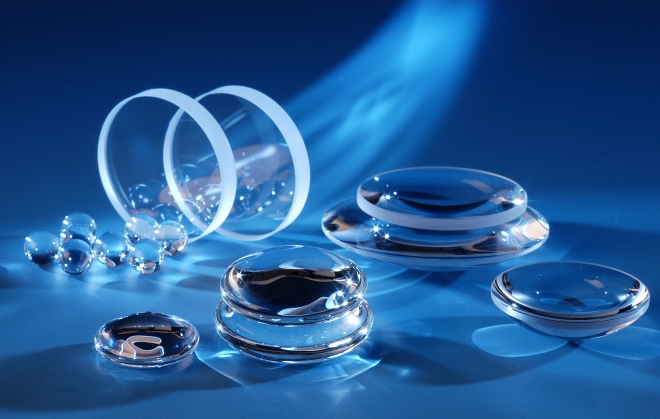Munich / Mainz (Germany), May 2, 2013 – At the Laser World of Photonics, SCHOTT presents new data on the bulk laser damage threshold (LDT) of various optical glasses, including viable alternatives to fused silica as lens material in industrial laser applications. The glasses tested are intended for use in laser material processing at wavelengths of 532 and 1064 nm with pulse lengths in the nano- and picosecond range.
According to TechNavio’s latest report, the global laser market is predicted to reach US$10.40 billion by 2016. One of its main driving forces is the development of next-generation laser technology, providing a high-energy beam even at a high repetition rate in a short period of time. In order to facilitate and optimize the optical design of these new systems, SCHOTT has now examined the bulk laser resistance of its optical glasses that are best suited for high power applications.
“The laser durability of an optical system depends on the surface quality of the optical components. But just as important is the lens material, which needs to withstand laser beams and their reflections,” says Dr. Ralf Jedamzik, Application Manager at SCHOTT. “Fused silica has yet been the material of choice for high-power applications. However, it limits the optical design due to its low refractive index. Our new data on the bulk laser damage threshold of different optical glasses suggest interesting alternatives – with a broader variety of optical properties to enable more sophisticated designs.”
Optimizing lens designs
SCHOTT tested the bulk laser damage threshold of various glass types covering a broad range of refractive indices and Abbe numbers. As a reference, Heraeus’ fused silica Suprasil® CG was used. The tests were carried out at the Laser Zentrum Hannover, Germany, one of Europe’s leading research and development institutes in the field of laser technology. SCHOTT cooperated with Qioptiq, to optimize its LINOS F-Theta-Ronar lenses with respect to performance and cost.
“We learned that glasses with lower Abbe numbers tend to have lower laser damage thresholds – except for the glass F2. In comparison to flint glasses like SF6, high refractive index glasses like N-LASF44 and N-LAF21 show a higher laser resistance,” Dr. Jedamzik states. “Most importantly, N-BK7 and N-FK5 showed very good behavior compared to Suprasil®. With respect to the test conditions, these glass types can be considered as alternatives to fused silica.”
Expanding the scope
The glass types N-BK7, N-FK5, F2, N-LAF21, N-LASF44 and SF6 were tested at wavelengths of 532 and 1064 nm and at pulse widths of 10 to 12 ns and 74 ps – common conditions in pulsed laser material processing. According to DIN ISO 21254, 150 test sites were investigated. The laser beam with a diameter between 5 and 10 mm (depending on the wavelength) was focused in the center of the sample to an effective diameter between 33 and 41 μm. To exclude surface damage, it was important to keep the laser intensity at the specimen’s surface in comparison to the laser intensity in the center of the sample as low as possible.
“The published results already enable an optimized design of the F-Theta lens if the actual laser loads are known in the optical path,” Dr. Jedamzik underlines. “Our customers can now directly access the available data facilitating the selection of appropriate materials for their respective application. In the near future, SCHOTT plans to extend its investigations to other glass types and components with respect to upcoming industrial and scientific laser projects.”
Additional information: http://www.schott.com/advanced_optics
SCHOTT is an international technology group with more than 125 years of experience in the areas of specialty glasses and materials and advanced technologies. SCHOTT ranks number one in the world with many of its products. Its core markets are the household appliance, pharmaceuticals, electronics, optics, solar power, transportation and architecture industries. The company is strongly committed to contributing to its customers’ success and making SCHOTT an important part of people’s lives with its high-quality products and intelligent solutions. SCHOTT is committed to managing its business in a sustainable manner and supporting its employees, society and the environment. The SCHOTT Group maintains close proximity to its customers with manufacturing and sales units in 35 different countries. Its workforce of around 16,000 employees generated worldwide sales of approximately 2 billion euros for the 2011/2012 fiscal year. SCHOTT AG, with its headquarters in Mainz, Germany, is owned by the Carl Zeiss Foundation.

Optics’ Resistance to Lasers
SCHOTT characterizes the bulk laser damage threshold of optical glasses for use in industrial high power applications

Optical Glass: Material base for crystal clear focusing. Source: SCHOTT













